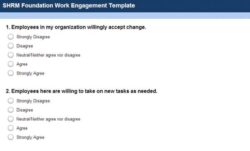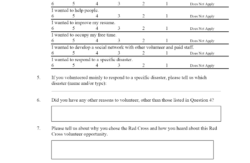Understanding the specific health needs of a community or organization is a crucial first step toward creating effective programs and interventions. Whether you are a public health official, a non-profit leader, or a corporate wellness manager, pinpointing what truly impacts well-being among your target group can be a complex but incredibly rewarding endeavor. It is about moving beyond assumptions and gathering real, actionable data directly from the source.
This systematic approach allows you to identify gaps in services, discover prevalent health concerns, and prioritize resources where they are most needed. Imagine being able to design initiatives that resonate deeply with your audience because they are built on their expressed needs and challenges. That is the power of a well-executed health needs assessment, and using a structured health needs assessment survey template can make this process far more efficient and effective.
Crafting an Effective Health Needs Assessment Survey
Designing a survey that truly captures the nuances of health within a population requires careful thought and strategic planning. It is not just about throwing a few questions together; it is about creating a tool that elicits honest, comprehensive, and relevant information. The goal is to develop a clear picture of health status, risk factors, access to care, and the social determinants that influence well-being. A poorly designed survey can lead to skewed data, misinformed decisions, and wasted resources. Think about the specific health outcomes or challenges you are trying to understand before you even begin writing questions.
Effective survey design starts with defining your objectives. What specific insights do you hope to gain? Are you looking to understand chronic disease prevalence, mental health challenges, substance use patterns, or access to preventative care? Clearly articulated objectives will guide your question development and ensure that every item on your survey contributes to your overall assessment goals. Once your objectives are clear, you can begin to outline the sections of your survey, moving from general demographic information to more specific health behaviors and perceptions.
Key Components to Include in Your Template
When building a health needs assessment survey template, consider including a range of question types to gather both quantitative and qualitative data. This allows for a richer understanding of the community’s health landscape.
Here are some essential categories to include:
- **Demographic Information:** Age, gender, ethnicity, income level, education, geographical location. This helps you segment data and identify disparities.
- **General Health Status:** Self-rated health, presence of chronic conditions, disability status, quality of life.
- **Health Behaviors:** Diet, physical activity, smoking, alcohol consumption, substance use, sleep patterns.
- **Access to Healthcare:** Insurance status, regular source of care, perceived barriers to accessing services (cost, transportation, language).
- **Mental and Emotional Well-being:** Stress levels, symptoms of anxiety or depression, access to mental health support.
- **Social Determinants of Health:** Housing stability, food security, employment, social support networks, community safety.
- **Community Assets and Resources:** Awareness and utilization of local health services, wellness programs, and community support groups.
Beyond these categories, it is also beneficial to include open-ended questions. These allow respondents to elaborate on their experiences, express concerns not covered by multiple-choice questions, and offer suggestions for improvement. Always ensure that your survey clearly states its purpose, guarantees anonymity or confidentiality, and provides contact information for any questions. Prioritizing privacy builds trust and encourages more honest responses.
Implementing and Analyzing Your Health Needs Assessment
Once your health needs assessment survey template is finalized, the next critical step is its implementation. Distributing the survey effectively is paramount to gathering a representative sample of your target population. Consider various distribution channels, such as online platforms, paper surveys in community centers, mail-outs, or even in-person interviews, depending on your audience’s accessibility and preferences. Promoting the survey through multiple avenues, like social media, local newsletters, and community meetings, can significantly boost participation rates. Providing clear instructions and ensuring the survey is easy to complete will also encourage higher response numbers.
During the data collection phase, consistent monitoring is essential. Track response rates and identify any potential biases in who is or isn’t responding. For instance, if you notice a low response from a particular age group or demographic, you might need to adjust your outreach strategy to ensure their voices are heard. Maintaining data integrity throughout this process is crucial; accurate input leads to reliable insights. This phase requires patience and a systematic approach to ensure that the data gathered is robust and reflective of the community’s health picture.
After collecting your data, the real work of analysis begins. This involves sifting through responses, identifying patterns, and drawing meaningful conclusions. Quantitative data can be analyzed using statistical software to determine prevalence rates, correlations, and significant trends. Qualitative data from open-ended questions should be reviewed for recurring themes and sentiments, providing rich context to the numerical findings. Look for common health challenges, service gaps, and underlying social or environmental factors that influence health. Comparing your findings against existing health data or benchmarks can also provide valuable context.
The ultimate goal of performing a health needs assessment is to translate findings into actionable strategies. The insights gained from your survey should directly inform the development of new programs, the modification of existing services, or the reallocation of resources. Present your findings clearly and concisely to stakeholders, highlighting key areas of need and proposed solutions. This evidence-based approach ensures that your efforts are targeted, impactful, and truly responsive to the community’s expressed health needs, leading to healthier outcomes for everyone involved.


